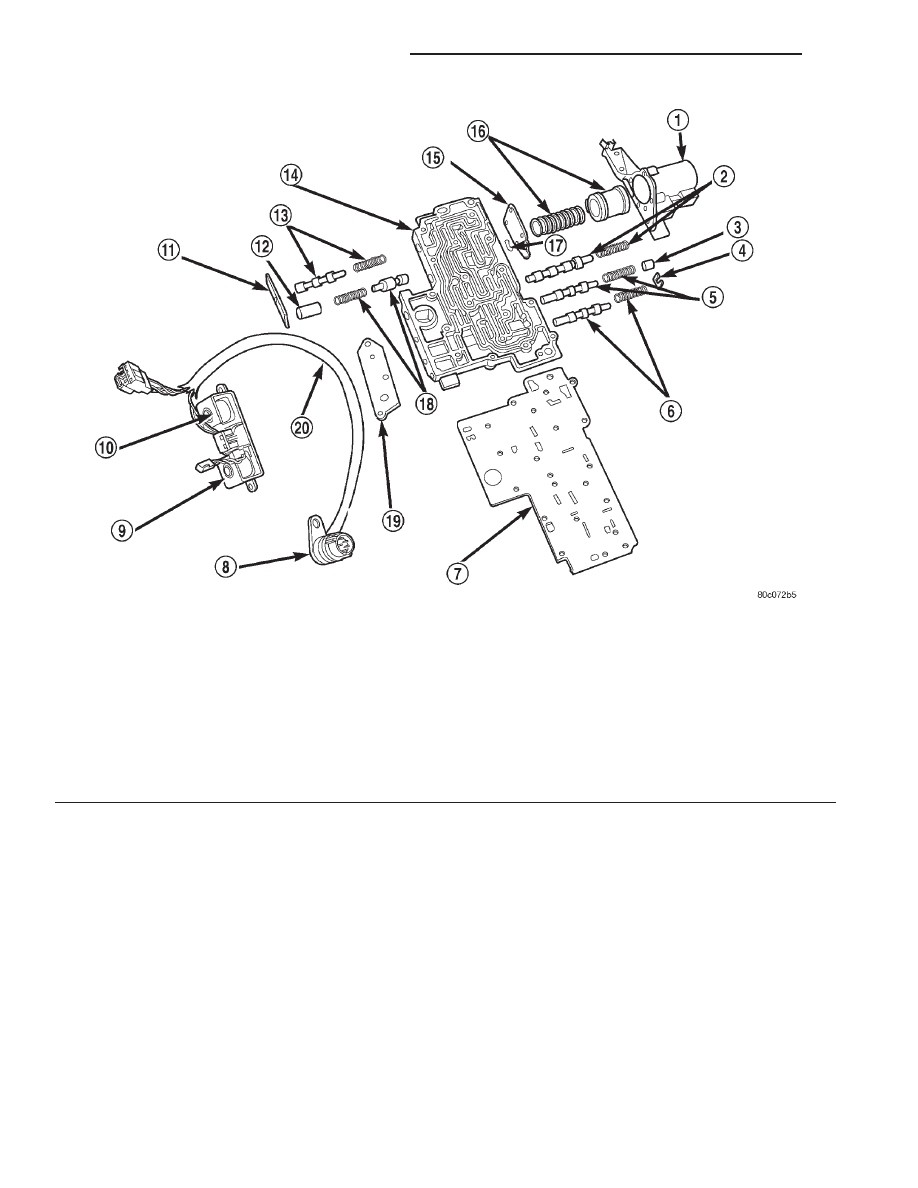Dodge Durango (DN). Manual - part 38

Fig. 21 Lower Housing Shift Valves and Springs
1 – 3-4 ACCUMULATOR HOUSING
2 – 3-4 SHIFT VALVE AND SPRING
3 – PLUG
4 – SPRING RETAINER
5 – CONVERTER CLUTCH VALVE AND SPRING
6 – CONVERTER CLUTCH TIMING VALVE AND SPRING
7 – OVERDRIVE SEPARATOR PLATE
8 – CASE CONNECTOR
9 – CONVERTER CLUTCH SOLENOID
10 – OVERDRIVE SOLENOID
11 – TIMING VALVE COVER
12 – PLUG
13 – 3-4 TIMING VALVE AND SPRING
14 – LOWER HOUSING
15 – ACCUMULATOR END PLATE
16 – 3-4 ACCUMULATOR PISTON AND SPRING
17 – E-CLIP
18 – 3-4 QUICK FILL SPRING AND VALVE
19 – SOLENOID GASKET
20 – HARNESS
21 - 18
42/44RE AUTOMATIC TRANSMISSION
DN
DESCRIPTION AND OPERATION (Continued)